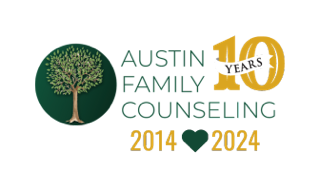Now that we have explored the various experiences of dissociation and dissociative disorders, how do dissociative disorders develop? The short answer is trauma. There is about a zero percent likelihood that dissociative tendencies are genetic. Dissociative disorders are most commonly associated with repetitive childhood physical and/or sexual abuse and other forms of trauma. These other forms include severe neglect or emotional abuse. Children may become dissociative in families in which the parents are unpredictable, frightening, or are dissociative themselves and do not have their own methods of coping in a healthy way with dissociation.
To reiterate from before, dissociation is considered adaptive because it reduces the overwhelming distress that is created by trauma. The trauma is just too much to handle, and so in a protective response, parts of the brain shut down and others become activated so the experience does not overwhelm the individual. This is survival at its best. It’s truly amazing that our minds can protect us in these ways. Difficulty arises when dissociation continues to be used in adulthood, when the original threat no longer exists, and it can then be seen as maladaptive. A dissociative adult may disconnect in situations that are perceived as threatening, because aspects of the situation trigger the former trauma(s), without determining whether or not there is any real danger. This can leave the person “tuned out” in various ordinary situations and unable to adequately protect themselves in times of real danger. When we think of the fear responses produced by the amygdala, “fight, flight and freeze,” this is a version of the “freeze” response.
Dissociative disorders can also develop in adulthood. This tends to be related to the intensity of dissociation during a traumatic event experienced as an adult. The more severe the dissociation experienced at the time of the event, the greater likelihood that these dissociative mechanisms will generalize to subsequent events. And again, if trauma is frequently experienced, such as abuse experienced in adulthood, there is a greater likelihood that a dissociative disorder may develop. The experience of ongoing trauma in childhood also greatly increases the likelihood of developing dissociative disorders in adulthood.
Treatment
Before seeking treatment, it is important to find a licensed professional who is well versed in treating dissociative disorders. There are various ways to treat dissociative disorders and treatment will be specific to the type of dissociative disorder that is diagnosed. However, there are key components that are central to these treatments. The first is stabilization. This is important in all areas of therapy, with the focus being creating safety and stability in the individual’s life. This includes creating coping skills specific to the individual in order to help them cope with their symptoms, ranging from anxiety to depression. Sometimes this includes safety planning, which pertains to coming up with a plan with the individual if the individual believes they may be in danger of harming themselves or others or if the individual is engaging in risky or dangerous behaviors. Stabilization also involves normalizing the individual’s experience, helping them understand that dissociation is a common response and that more severe dissociation is actually an adaptive response that helped them cope with overwhelming distress. This is extremely important. Many people assume that because someone suffers from a mental health disorder that there is something “wrong” with them. I reiterate to my clients this is not the case. Our brains are amazing and complicated organs. Sometimes they ways in which our brain protects us can also lead to problems in day-to-day functioning down the road. The primary function of therapy is to help individuals get back to a balance that works for them.
Since trauma is the most common cause of dissociative disorders, part of the treatment involves trauma work. This means processing through the memories of the trauma experienced by the individual. This takes time and it is imperative this is done at the pace of the individual. Continued stabilization and development of coping skills may continue throughout treatment.
This concludes my discussion on dissociation. I hope you have gained insight into dissociation and all its facets. Please visit the International Society for the study of Trauma and Dissociation for more information.
References:
Haddock, Deborah Bray (2001) The Dissociative Identity Disorder Sourcebook, McGraw-Hill.











